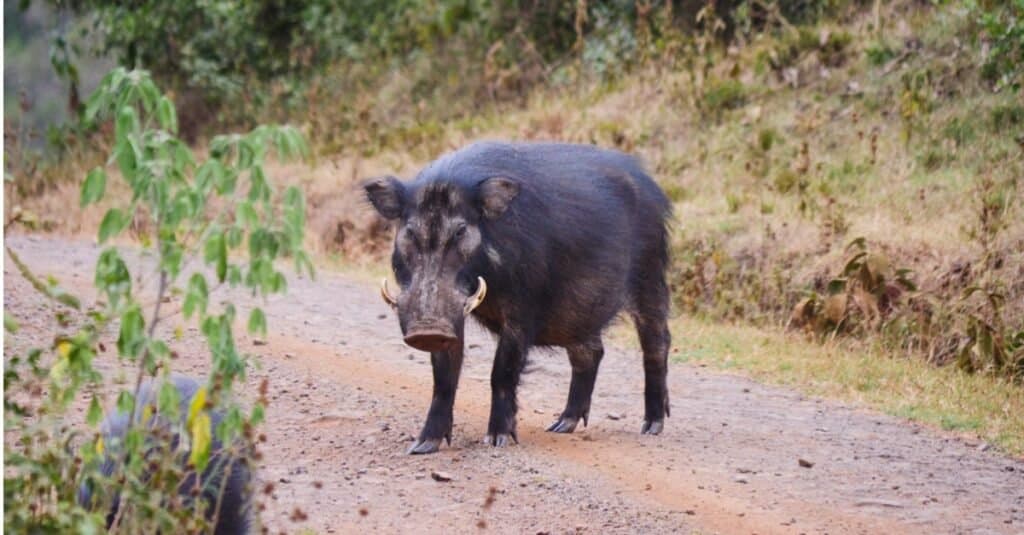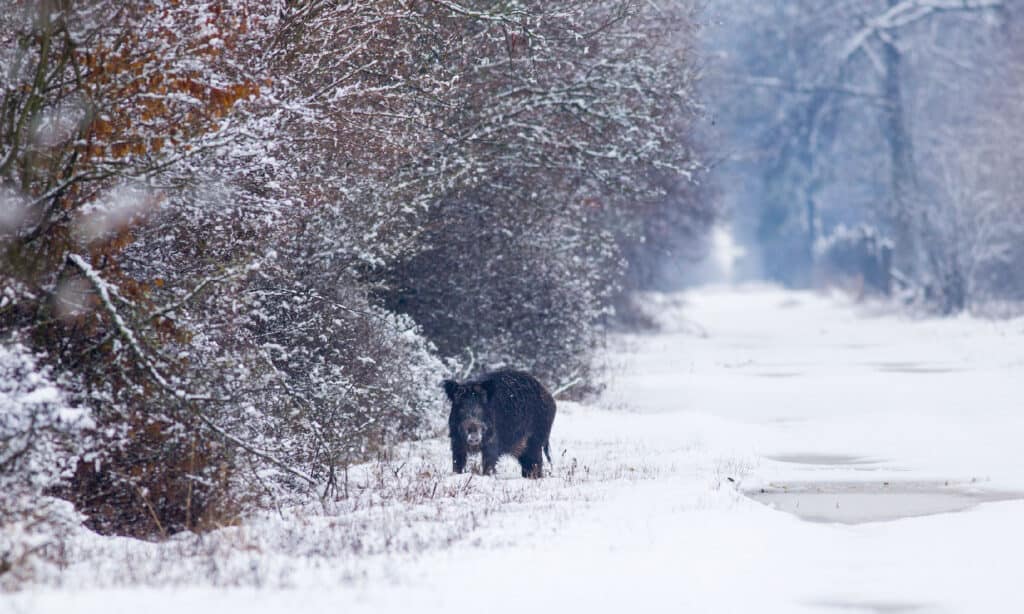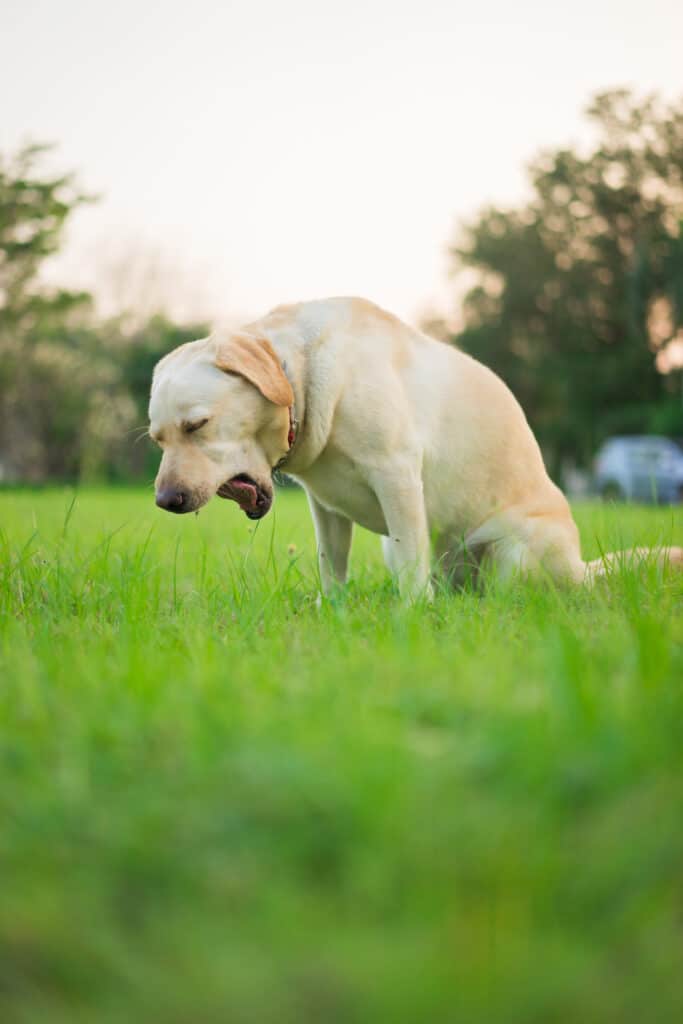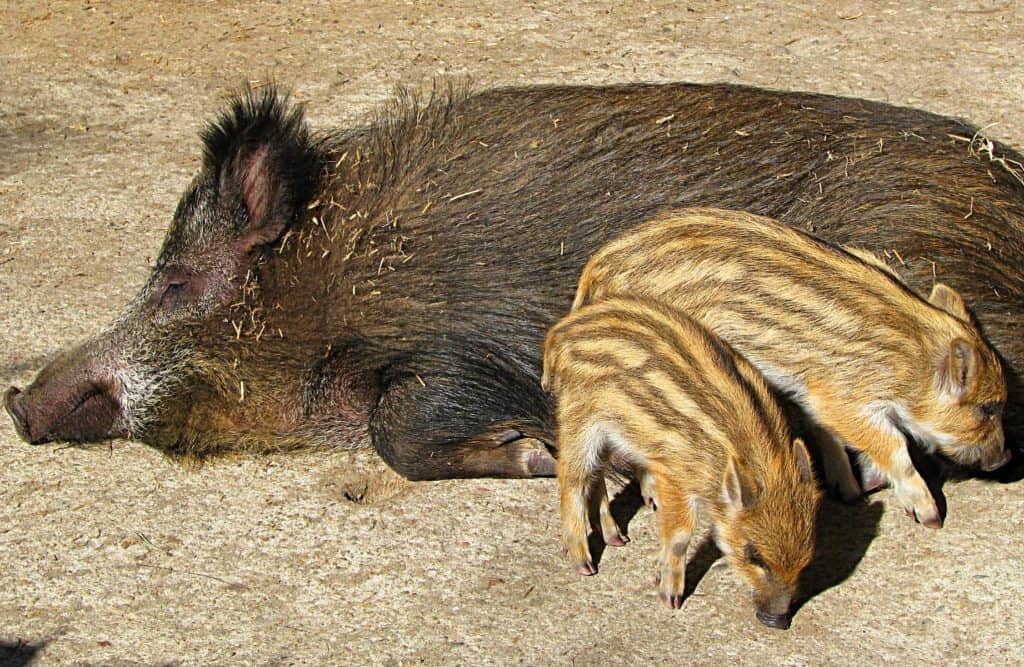Quick Answer:
- Feral pigs can transmit dozens of diseases and parasites to people and other animals.
- They are super bad-tempered and have sharp tusks and teeth that can cause injury.
- They stir up mud and deposit their waste products in streams and ponds, polluting it for other species and driving away fish.
Every year feral pigs in the U.S. do millions of dollars of damage to farms, yards, and wild spaces. They carry disease, uproot valuable fencing and plants, and drive away species that are environmentally beneficial, including some endangered species. Although there are no accurate estimates of how many people and pets are injured by feral pigs nationwide, incidents of negative encounters with these territorial and unpredictable animals are on the rise. Feral pigs in the U.S. are an invasive species that have spread in the country due to human activity. It will take coordinated, long-term human effort to get control of this problem and keep ourselves and our property safe.

Wild pigs in the U.S. may number up to nine million today. They have been spotted as far north as Canada.
©iStock.com/chingkai huang
What Started This Problem?
Feral pigs are a man-made problem. Pigs are not native to the Western Hemisphere. They were domesticated in Europe and Asia, probably by more than one group of people at about the same time. Sailors brought them along on voyages as a food source, and they also released them in the wild in the new lands they discovered. They wanted them to multiply so that on future voyages, they could go ashore and hunt them for fresh meat, instead of having to transport food.
Christopher Columbus followed this practice on his voyages to the New World, introducing pigs to the Caribbean islands without much thought as to the long-term consequences on the environment. Feral pig herds grew even larger as domestic pigs escaped from colonial farms that were built later. It has all resulted in a nine-million-pig problem today. It’s an issue all over the country, but especially in Texas, where razorbacks number three million.

Early explorers “improved” Caribbean islands by letting pigs go to multiply unchecked.
©Simon Dannhauer/Shutterstock.com
The Danger of Feral Pigs in the U.S.
Feral pigs are super bad-tempered. They have sharp tusks and teeth and don’t mind using them. They can transmit dozens of diseases and parasites to people and other animals. As omnivores, feral pigs root around in the soil looking for roots, bulbs, grubs, and burrowing animals to eat. As they turn over the soil, they break up root systems and kill out ground cover. This removes a food source for herbivores and increases soil erosion.
Wild pigs also like to wallow in the shallows of ponds and streams, especially on hot days. They stir up mud and deposit their waste products in the water, polluting it for other species and driving away fish. Forests where feral pigs live decline in biodiversity by about 26% because other species will flee to other places in search of food, clean water, and a place to build burrows that pigs won’t destroy.

Wild boars can attack with sharp teeth and tusks.
©iStock.com/JMrocek
Damage to Farms
Farmers understand what a big problem feral pigs can pose. They do a lot of damage to crops, livestock, and farm equipment. In fact, the U.S. Dept. of Agriculture estimates feral pigs in the U.S. cost farmers $1.5 billion every year! They eat all sorts of crops, leave ruts in pastures that are a hazard for livestock, rub bark off fruit trees, break down grapevines, and kill calves and lambs. Not to mention eating animal feed, polluting water supplies, and breaking down fences and other light farm constructions.

Feral pigs have become an international problem. They’ve even been spotted in Canada!
©iStock.com/Jevtic
Threat to Space, People, and Pets
Spaces
Feral pigs can be an annoyance and create an expense by damaging lawns, gardens, ornamental objects, decorative fencing, or landscaping. They create the same kinds of damage to public spaces like golf courses, beaches, parks, and cemeteries. When they are hit crossing the road, they can do a lot of damage to vehicles and put people at risk of injury. Reportedly, they also have directly threatened and attacked farmers, golfers, and hikers. It’s important not to feed them or leave garbage accessible. If they associate people with food, it can make them bolder about approaching inhabited areas.
People
One of the most common ways feral swine sicken people is when they are hunted and their meat is improperly prepared. Whenever handling a feral pig carcass, gloves should be worn and meat should be cooked until it reaches an internal temperature of 160°F.
Pets
Wild pigs can be a danger to domestic animals by directly attacking your animal. Pigs will try to kill and eat small and young animals. A mother cow can be wounded and infected by a diseased pig while trying to defend her calf. It’s also possible for your pet to attack a pig. Your dog could get into a fight with a pig wandering too close to your property.
Another way dogs are likely to get sick is the same way you might: by eating pork that has been improperly butchered and cooked. If your dog snatches raw scraps or bones from the garbage, it could cause a problem. Take your animal to the vet if you notice symptoms like fever, lethargy, swollen joints, or respiratory problems.
Most of the time, though, pigs spread disease indirectly. For example, they might wallow and defecate in a creek and the polluted water travels downstream where horses drink from it. Or at night the pig might eat out of a feeding or watering container that was left out during the day for domestic livestock.

Pets that become ill after consuming wild pork should be taken to a vet immediately.
©Dhanoo Surasarang/Shutterstock.com
Stategies to Reduce Wild Pigs in the U.S.
The government is trying different ways to kill wild pigs in the U.S. but none of these have solved the problem completely. A lot of states encourage hunting wild pigs, but this tactic pushes survivors into other areas, spreading their range. Special electric fencing and barbed wire placed at ground level has also been tried. These structures are meant to stop pigs from rooting under the ground. However, this practice can become expensive.
Trapping is another possibility. But with traps there’s the chance of catching a different kind of animal than what you’re targeting. And you do have to check your traps regularly and reset them after they’ve been triggered. Poisoned pig feed can do the trick, but other animals might eat it, or eat the carcass of a poisoned pig. And introducing more deadly chemicals into the environment isn’t the best strategy.
How about birth control? There is now contraceptive-laced hog feed that diminishes the fertility of male pigs. It only works for 30 days, though, and has to be repeated. If the pig does not wander back to feed in this area by the end of 30 days, this strategy simply just delays the inevitable birth of more pigs.

Contraceptive-laced hog feed can help cut down on feral pig reproduction.
Wild pigs in the U.S. are a serious, dangerous problem, from the standpoint of the environmental and economic damage they cause, but also as a direct threat to people and their pets, through injuries or the spread of disease. Though there is no one solution to the problem, being educated and aware can help you be more cautious when out in wild pig country. Armed with this knowledge, you can be supportive of vigorous local efforts to control the problem.
The photo featured at the top of this post is © SunflowerMomma/Shutterstock.com
Thank you for reading! Have some feedback for us? Contact the AZ Animals editorial team.







